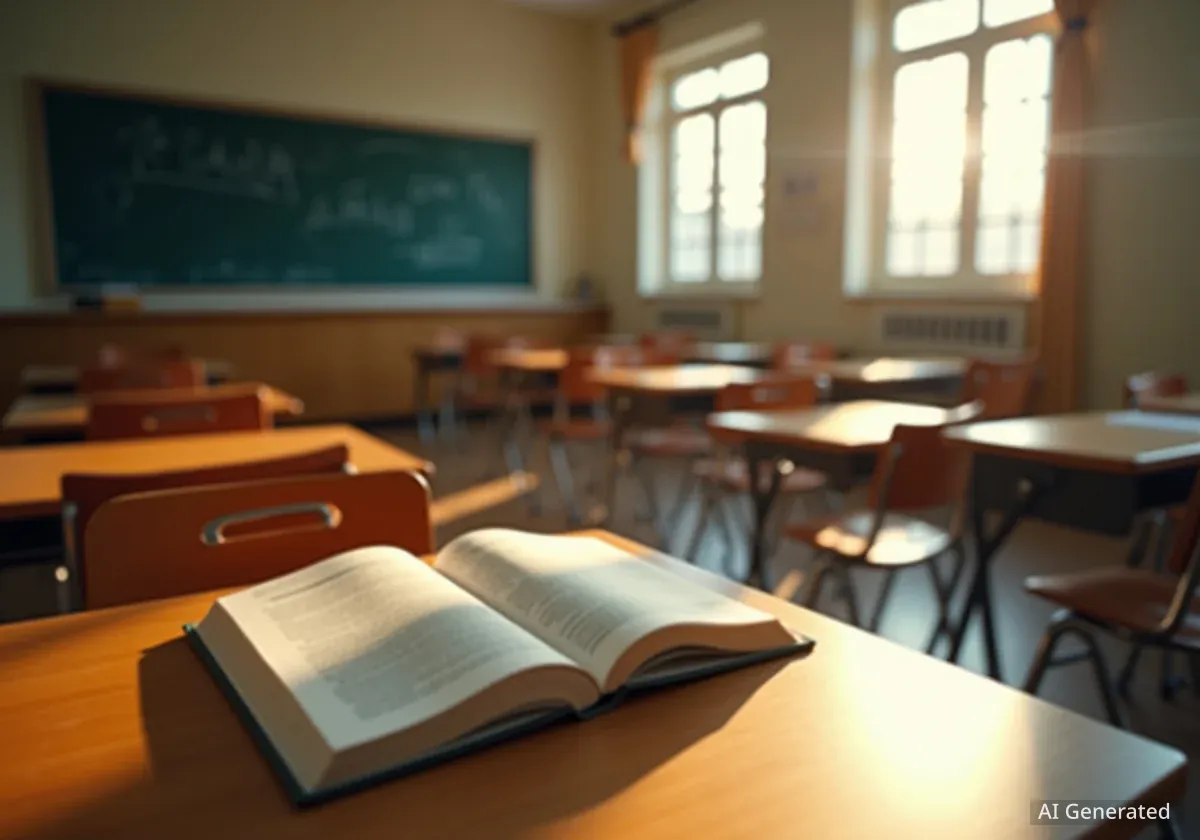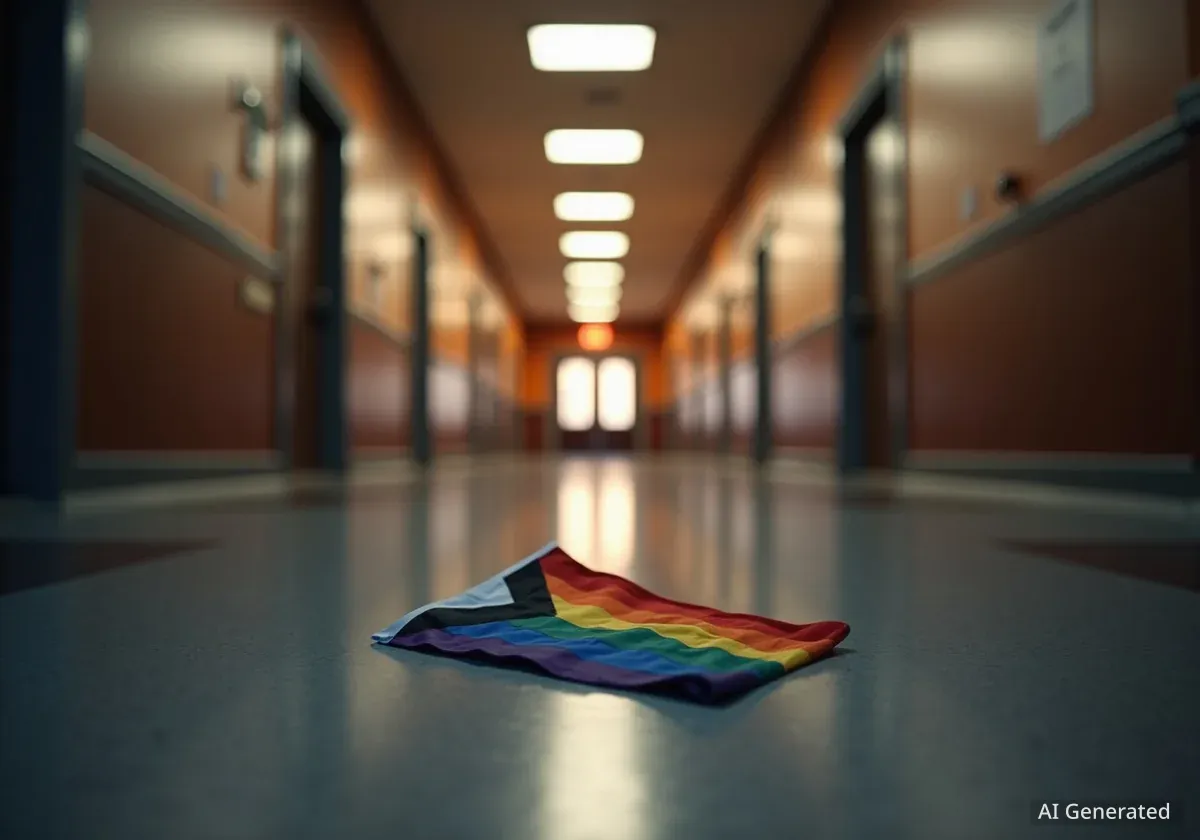Colleges and universities across the United States are confronting a significant financial crisis, driven by a combination of declining domestic student enrollment, rising operational costs, and a potential sharp drop in international student numbers. Experts warn that this confluence of factors is creating an unsustainable environment, pushing many institutions toward closures and mergers at a pace not seen in over a decade.
Key Takeaways
- US higher education is facing a severe financial crisis due to falling enrollment, rising costs, and reduced federal funding.
- A projected decline in international students, a key revenue source, could result in a loss of nearly $7 billion for the US economy.
- Elite universities with large endowments are largely protected, while less competitive, tuition-dependent schools are most at risk of closing or merging.
- Institutions are responding by cutting budgets, academic programs, and staff to manage the financial strain.
A 'Perfect Storm' of Financial Pressures
University leaders are navigating what Todd Wolfson, president of the American Association of University Professors, has described as a “perfect storm” of financial challenges. For years, warning signs have been apparent as a shrinking pool of high school graduates has led to lower college enrollment rates. This trend, often called the “demographic cliff,” means fewer students are entering the higher education system.
At the same time, the cost of running a university continues to climb. A 2024 report from the Federal Reserve Bank of Philadelphia noted that higher operating costs, combined with restrictions on how much schools can raise tuition, have severely limited their ability to generate revenue. “Higher education as a whole is facing serious financial headwinds,” the report concluded.
Adding to these domestic pressures are deep cuts in federal funding and a precarious situation with international student enrollment. Collectively, these issues mean less money is available for faculty, academic programs, and crucial financial aid for students, threatening the core mission of many institutions.
Understanding the Demographic Cliff
The term "demographic cliff" refers to the sharp drop in the number of traditional college-age students that began after the 2008 financial crisis, which led to lower birth rates. This demographic shift is now directly impacting university enrollment figures, creating a more competitive environment for recruiting a smaller number of students.
The Critical Role of International Students
One of the most immediate threats to the financial stability of US colleges is the anticipated decline in international students. Historically, these students have been a reliable and essential source of income for American institutions. According to the U.S. Department of Homeland Security, the country hosted a record high of over 1.2 million students from abroad last September.
However, recent changes to student visa policies are expected to reverse this trend. Projections for the 2025-26 academic year are concerning. NAFSA: Association of International Educators anticipates as many as 150,000 fewer international students may enroll. This represents a potential 15% drop in total international enrollment and a staggering 30%-40% decline in new students from other countries.
Economic Impact of International Students
According to the most recent data from NAFSA, international students contributed $46.1 billion to the U.S. economy during the 2024-25 academic year. A significant drop in their numbers could lead to an economic loss of nearly $7 billion.
While international students make up just under 6% of the total higher education population in the U.S., their financial contribution is disproportionately large. “U.S. colleges and universities need a contingent of foreign students, who typically pay full tuition,” explained Ted Mitchell, president of the American Council on Education. This revenue is often used to support the broader university budget.
“Full-paying international students pay scholarships for domestic students — it’s a 1-to-1 relationship.”
The impact is already being felt at some schools. Hilary Link, president of Drew University in New Jersey, reported that about one-third of their new international students either withdrew or deferred this semester due to visa issues. “For a small institution like Drew, we did see an impact,” Link said. At her university, students from 58 countries make up 14% of the total student body.
A Tale of Two Tiers: Elite vs. Vulnerable Institutions
The financial crisis will not affect all universities equally. According to Jamie Beaton, co-founder of college consulting firm Crimson Education, the situation is creating “a tale of two worlds.”
The Insulated Elite
The nation’s most prestigious colleges and universities, such as those in the Ivy League, are considered “bulletproof.” These institutions are protected by several factors:
- Large Endowments: Schools like Harvard University have massive financial reserves that shield them from short-term revenue shocks.
- Strong Applicant Pools: Top-tier schools receive far more applications than they can accept, allowing them to fill their classes many times over.
- Diverse Student Body: Their global reputation ensures a steady stream of both domestic and international applicants.
“These upper-tier schools are not without risk, but they have so many hedges against that risk they are more insulated from disruptions,” said Chris Glass, a higher education specialist at Boston College. “They are going to be the most resilient.”
The Vulnerable Majority
In stark contrast, a large number of less competitive and tuition-dependent institutions face a precarious future. “There is a fair percentage of institutions essentially living month to month, or paycheck to paycheck,” Glass noted. These schools are “extremely vulnerable” because they have built their financial models around consistent enrollment, including a steady flow of international students.
For these mid-tier and smaller schools, the combination of a shrinking domestic applicant pool and a drop in international students is a direct threat to their survival. Unlike elite universities, they may not have the brand recognition or resources to easily recruit other students to fill the gap. Some will “bleed money, reallocate funds and see if they can survive,” Glass added.
How Universities Are Responding to the Crisis
With revenue streams under pressure, colleges and universities are being forced to make difficult decisions. “Colleges and universities are not holding their breath” for a financial rebound, said Ted Mitchell. “They need to hit the cost side hard.”
Laura Trombley, president of Southwestern University in Texas, outlined the typical process for budget cuts. “You have levers to pull, but you don’t have that many levers,” she stated. The sequence of cuts often follows a predictable pattern:
- Facilities Budget: The first cuts are usually made to maintenance and new construction projects.
- Academic Programs: Under-enrolled programs, frequently in the humanities, are next to be reviewed for potential reduction or elimination.
- Faculty and Staff: The final and most difficult step is reducing the number of employees.
“We are carefully monitoring all of our expenses, but we also know the next few years are going to be tough,” Trombley said. This proactive cost-cutting is becoming the new normal for administrators nationwide.
The Long-Term Outlook for American Higher Education
The current pressures signal a potential shift in the American higher education landscape, where fewer students may attend college and fewer colleges will remain open. For decades, a college degree has been a proven path to higher earnings and social mobility. The current crisis threatens to limit that access for future generations.
Todd Wolfson of the AAUP warned of the broader consequences. “What we are going to see is programs shut down, campuses shut down, smaller public or private institutions closing or merging and a curtailment of opportunities for our students,” he said. The challenge for university leaders is to adapt creatively to ensure that higher education remains accessible and valuable in an increasingly difficult environment.





